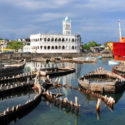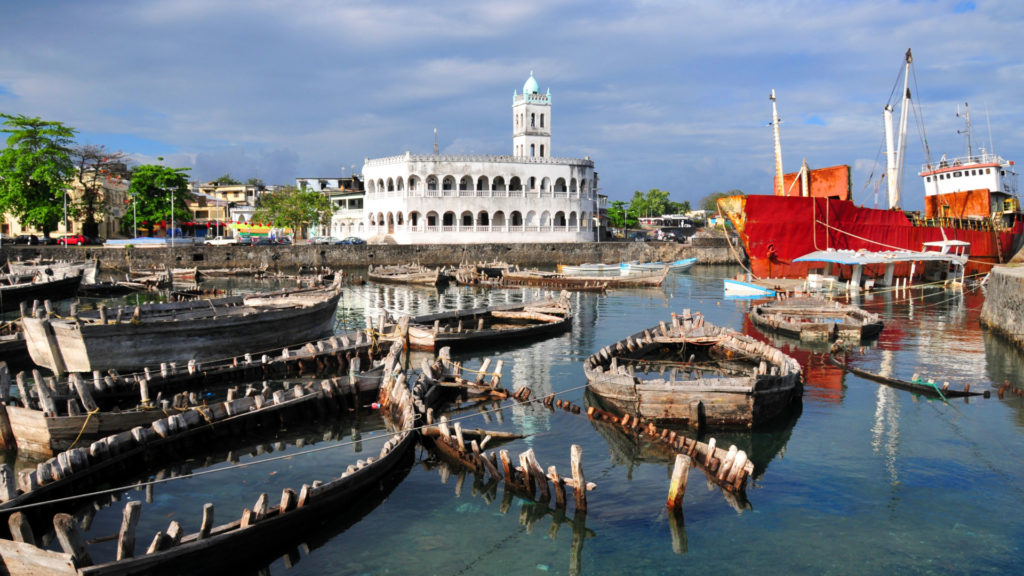Why you should go to the world’s least-visited countries
Parisian bridges are weighted down with copycat “love locks,” while visitors crowd cheek-to-jowl into Barcelona churches and Dubrovnik’s historic center. In Italy, attempts to manage the impact of tourism range from segregating visitors to fines for flip-flops.
As a glut of anxious headlines document overtourism, it’s easy to think that the planet is simply full.
But stray from the well-worn tourist trails, and you’ll discover another travel story entirely. In much of the world, there are places that are eager to welcome tourists — and when practiced sustainably, where tourism can even help alleviate poverty.
The contrast between the most- and least-visited places is stark. In 2017, nearly 87 million international tourists arrived in France. That same year, a mere 2,000 international tourists visited the South Pacific country of Tuvalu, where it’s easy to find a beach — or even an entire island — to yourself.
Based on the most recent data (PDF) compiled by the United Nations World Tourism Organization, this list reflects many of the world’s least-visited countries and overseas territories, where you’ll find gorgeous natural beauty, culture and history without pushing through a thicket of selfie sticks.
It’s sadly incomplete. Some of the most magnificent places on Earth — including Guinea-Bissau’s lush jungle and the expansive shores of Lake Chad — have been excluded because of safety recommendations from the US Department of State.
What remains, though, shows just how rewarding it can be to leave the popular sites behind, whether you’re lounging on Sierra Leone beaches, exploring Liechtenstein’s mountaintop castles or shipwreck diving in the South Pacific.
And if you can’t picture a week in Kiribati or imagine the flavor of Timor Leste’s traditional cuisine, it’s OK. By spinning the globe and booking a flight to a country you know little about, you’ll infuse the journey with a sense of wonder. That, after all, is what travel is for.
1. Tuvalu
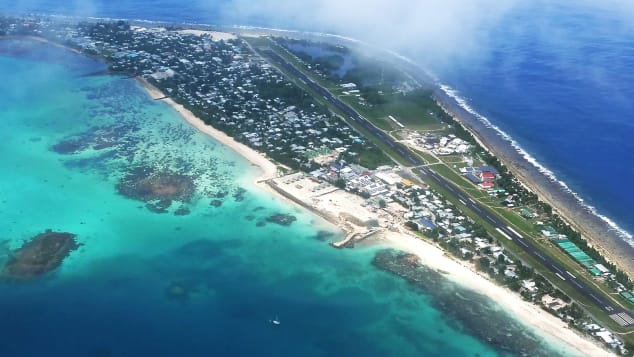
Tuvalu is among the world’s most isolated nations.
Fiona Goodall/Getty Images
With more than 100 tiny islands scattered across the South Pacific, the country of Tuvalu is among the world’s most isolated nations.
Only the main island, Funafuti, has an airport. From there, travelers continue to the outlying communities by passenger ferry. Free from the crowds that fill beaches in popular destinations like Fiji, these islands are an untouristed haven where you can watch flying fish skim the water, spend a lazy afternoon in a hammock or snorkel candy-hued coral reefs.
If you’re planning a trip to Tuvalu, don’t wait: The waves that lap Tuvalu’s stilt houses have long been seen as an existential threat here, since rising seas could swamp the low-lying country.
Why go: Stroll powdered sugar beaches at risk from rising sea levels.
International tourist arrivals in 2017: 2,000
2. Kiribati
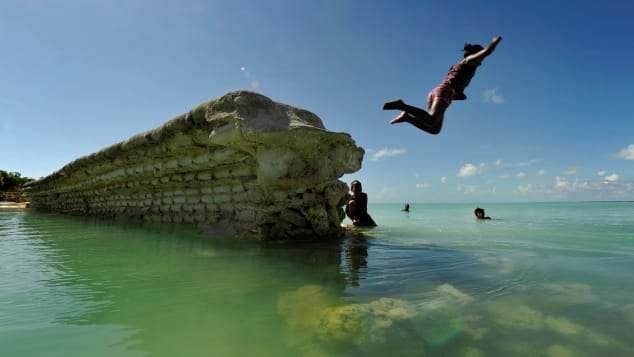
Kiribati’s beauty is matched by its remoteness.
The AGE/Fairfax Media/Fairfax Media via Getty Images
Scatter-shot atolls and lagoons barely peek above the central Pacific waters in Kiribati, whose islands and atolls cluster into three groups: the Gilbert, Phoenix and Line Islands.
It’s hard to overstate the isolation of these faraway isles — neighboring Fiji is relatively close at 1,394 miles away — and few travelers make the journey here. Those that do, however, will be treated to a rich tradition of hospitality. While not every visitor will secure an invitation to a traditional feast, or botaki, many have.
If you’re lucky enough to attend, you might see dancers in pandanus skirts, listen to drums beating out a traditional rhythm then dine on breadfruit, taro and sprouted coconut.
Why go: Experience a botaki in an open-air maneaba, or meeting house.
International tourist arrivals in 2016: 6,000
Read about why Kiribati celebrates the new year earlier than almost anyone else.
3. Marshall Islands

The waters around the Marshall Islands are home to spectacular scuba diving sites.
Reinhard Dirscherl/ullstein bild/Getty Images
Bombs and bathing suits put these Pacific isles on the world’s radar — bikinis were named for the United States’ nuclear testing on the Marshall Islands’ Bikini Atoll.
Decades later the island is still radioactive, as is the test site at Enewetak Atoll, but the waters surrounding Bikini Atoll have become one of the world’s most spectacular scuba diving sites.
There are more than a dozen shipwrecks on the seafloor near Bikini Atoll. Make your first dive to see the aircraft carrier USS Saratoga, which was present at the Battle of Iwo Jima before the US military used the ship for nuclear target practice. Divers will find deck guns blooming into colorful coral reefs, and schools of fish threading between bombs still strapped to the ship’s metal decks.
Why go: Scuba dive into a ship graveyard transformed into an eerie underwater playground.
International tourist arrivals in 2017: 6,000
Follow an interactive journey to the Marshall Islands.
4. Montserrat
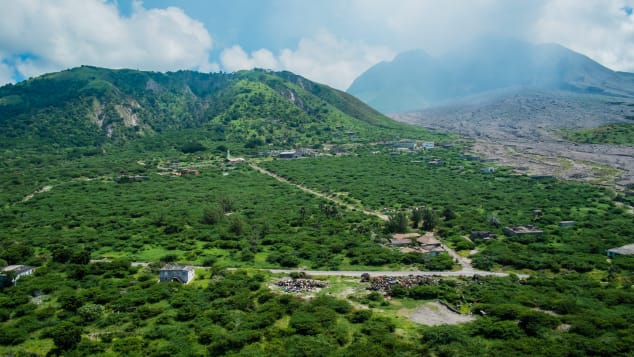
Montesrrat’s landscape is shaped by volcanoes.
Sebastian Widmann/dpa/AP
Velvety green hills pinch towards the rim of Montserrat’s Soufrière Hills volcano, whose incendiary force has shaped the landscape of this Caribbean island.
Much of Montserrat was overshadowed by volcanic eruptions in the 1990s, when the capital city of Plymouth was buried under a deep layer of ash and volcanic stone. Now, visitors come by plane or ferry from the nearby island of Antigua to see the fallout of the volcano’s furious power.
Tours of Plymouth reveal a 17th-century church turned gray with ash and the ruins of a once-grand hotel.
Why go: See a modern-day Pompeii, then lounge on new beaches created from crumbling volcanic stone.
International tourist arrivals in 2017: 8,000
5. Niue

The waters off Niue’s rugged coastline are used as a nursery by humpback whales.
Nick Perry/AP
If your image of a Polynesian island is all gentle waves and soft sand, think again: Niue’s rugged and cave-pocked coast is etched in sharp coral.
From July through October, humpback whales use Niue as a warm-water nursery, lolling close enough to the island to be spotted from shore. During those months, the sound of the whales’ songs and slapping tails can be heard above the sea breeze.
Here, visitors can even join trained guides to swim with the humpback whales, one of the few places on earth where it’s possible.
Why go: Swim alongside school bus-sized whales in one of the world’s smallest countries.
International tourist arrivals in 2017: 10,000
6. American Samoa

Matafao Peak dominates the skyline above Pago Pago Harbour.
Torsten Blackwood/AFP/Getty Images
Steeply pitched islands drop towards crystalline water in American Samoa, a South Pacific island group northeast of Fiji that’s the only US territory in the Southern Hemisphere.
Whether you’re skimming Pago Pago Harbor in an outrigger canoe or casting a line for hefty tuna and marlin, there are endless ways to explore the sea here. To find the treasures hidden in the dense forest canopy, head to the National Park of American Samoa for a trek through fruit bat country.
The Samoan fruit bat has a wingspan of up to three feet, and the fuzzy mammals can be spotted dangling from trees or swooping through the air in search of fresh fruit and nectar.
Why go: Hang with the endangered fruit bats of the National Park of American Samoa.
International tourist arrivals in 2017: 20,000
7. Solomon Islands
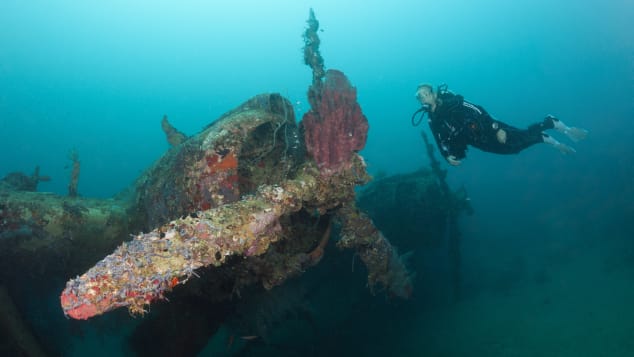
Sunken seaplanes, oil tankers and submarines make the Solomon Islands a subaquatic museum.
Prisma by Dukas/Universal Images Group Editorial/UIG via Getty Images
Desperate battles unfolded against a paradise-island backdrop in this South Pacific archipelago after US Marines landed on Guadalcanal Island in 1942.
Decades after the last skirmish, the lush jungle holds rusting tanks, amphibious vehicles and fox holes that are a haunting reminder of that era. And the history doesn’t stop at the waterline.
Sunken seaplanes, oil tankers and submarines are strewn across the ocean floor, sprouting coral formations on corroded metal sheathings. For travelers who snorkel or scuba dive, exploring the Solomon Islands is the chance to watch sea life colonize the remnants of a brutal war.
Why go: Discover Second World War history in a vast archipelago.
International tourist arrivals in 2017: 26,000
Read about the best private islands on earth — including one in the Solomon Islands.
8. Comoros
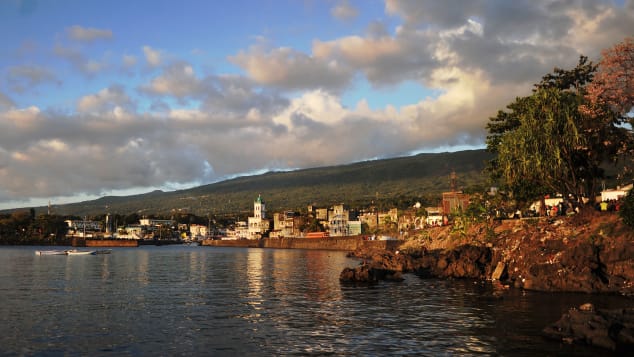
The islands of Comoros are often called the “Perfume Isles.”
Tony Karumba/AFP/Getty Images
Cupped in the ocean between Madagascar and Mozambique, Comoros has the kind of clear water and pale beaches that draw travelers to the Seychelles — but with few tourists and little development.
There’s something in the air here, too. Often called the “Perfume Isles,” the islands of Comoros have been cultivating aromatic plants for making scents since the French colonial era.
Now, the blossoms of the ylang-ylang tree infuse the breeze with an evocative aroma, mixing with cloves, bergamot, jasmine, vanilla and lemongrass to intoxicating effect.
Why go: Breathe the perfumed air of an island that overflows with blooms.
International tourist arrivals in 2017: 28,000
Need more reasons to visit Comoros? Here are five.
9. São Tomé and Príncipe
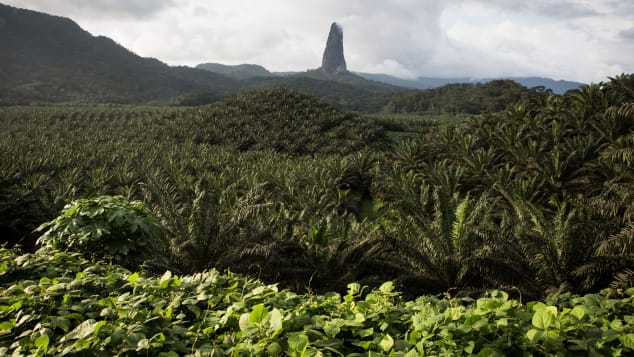
São Tomé and Principe are a biodiversity hotspot.
Ruth McDowall/AFP/Getty Images
Making up a nearly equatorial nation in west Africa’s Gulf of Guinea, the islands of São Tomé and Príncipe are packed with endemic plants and animals.
In the lush jungle that has overtaken former coffee plantations here, travelers might find begonias growing high as a house, hundreds of orchid species and birds in every hue.
For a nature-lover’s introduction to this biodiversity hotspot, start by flying into the main island of São Tomé then continue by small plane to tiny Príncipe. The volcanic island is a UNESCO Biosphere Reserve, and new species are discovered here on a regular basis, from reed frogs to owls.
Peer carefully into the foliage, and you may spot a blooming flower or furtive creature that’s yet to be documented by scientists.
Why go: Search for undiscovered species in a biodiversity hot spot.
International tourist arrivals in 2016: 29,000
10. Federated States of Micronesia

The ancient city of Nan Madol is home to grand basalt palaces and temples.
Nicole Evatt/AP
If you plan to spend one day on every island in the Federated States of Micronesia (FSM), you’ll need more than a year and a half to explore the Pacific nation. There are 607 islands here, but put them together and they add up to a mere 271 square miles of land — and that’s spread across nearly 2.6 million square miles of water.
Many of the islands are uninhabited. But exploring Pohnpei, the largest island in the FSM, is a fascinating reminder that the archipelago’s been shaped by humans for centuries.
Off the island’s southeastern coast is the UNESCO World Heritage Site of Nan Madol, which comprises 100 man-made islets created by a great Pacific dynasty. Here, travelers can explore grand basalt palaces and temples constructed at the center’s apex between 1,200 and 1,500 AD.
Why go: Visit an ancient ceremonial center rising from the ocean.
International tourist arrivals in 2016: 30,000
Read about how Nan Madol inspired the horror writer H.P. Lovecraft.












